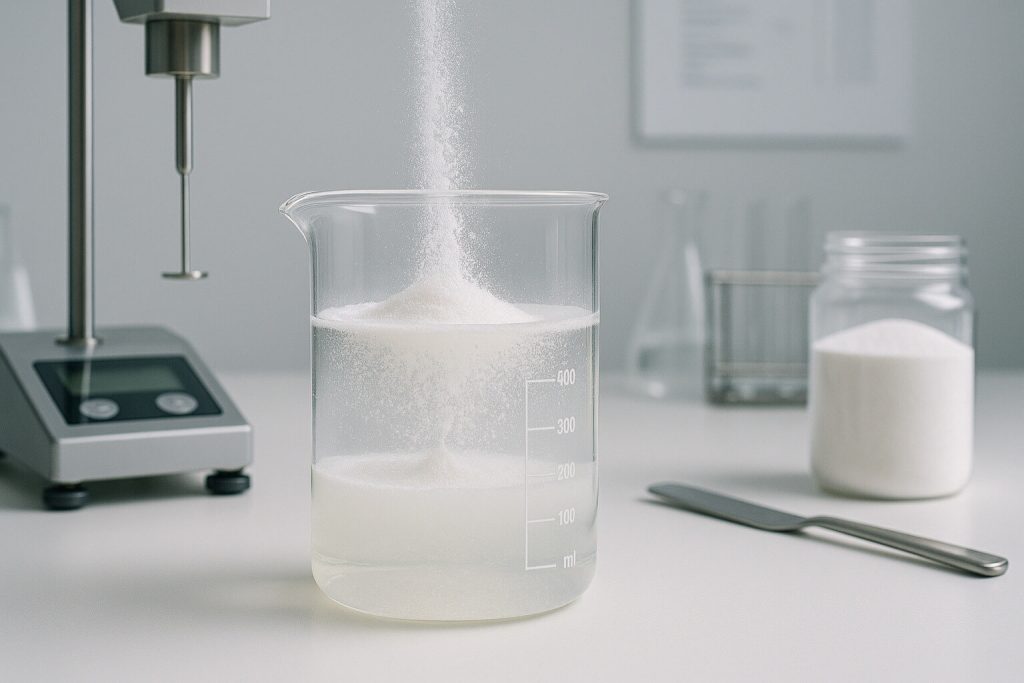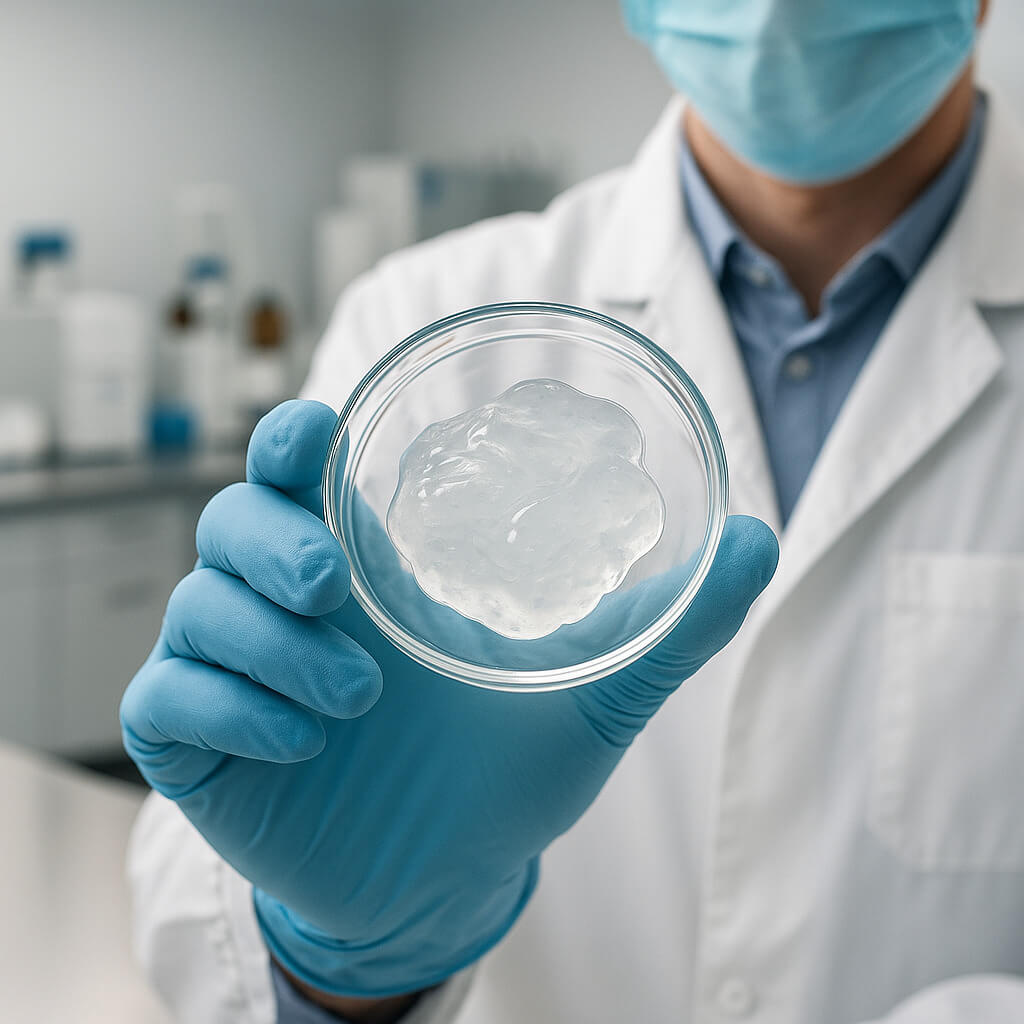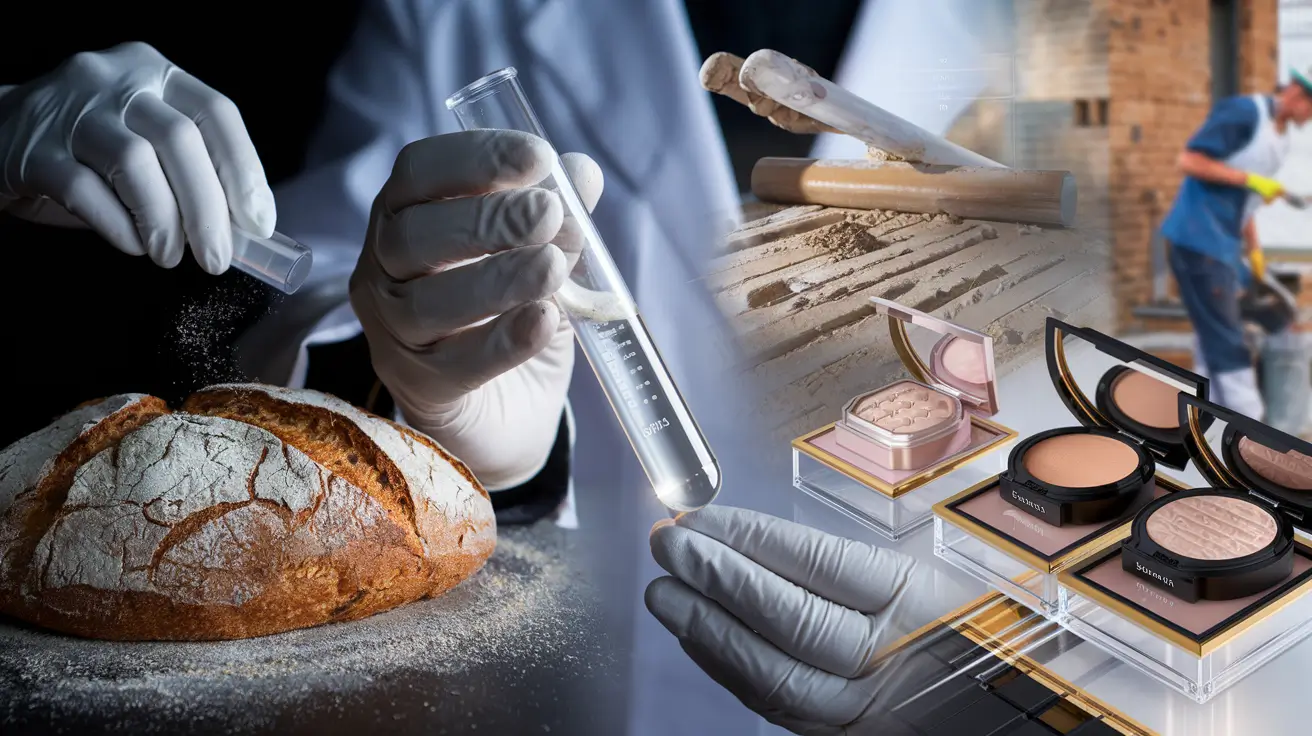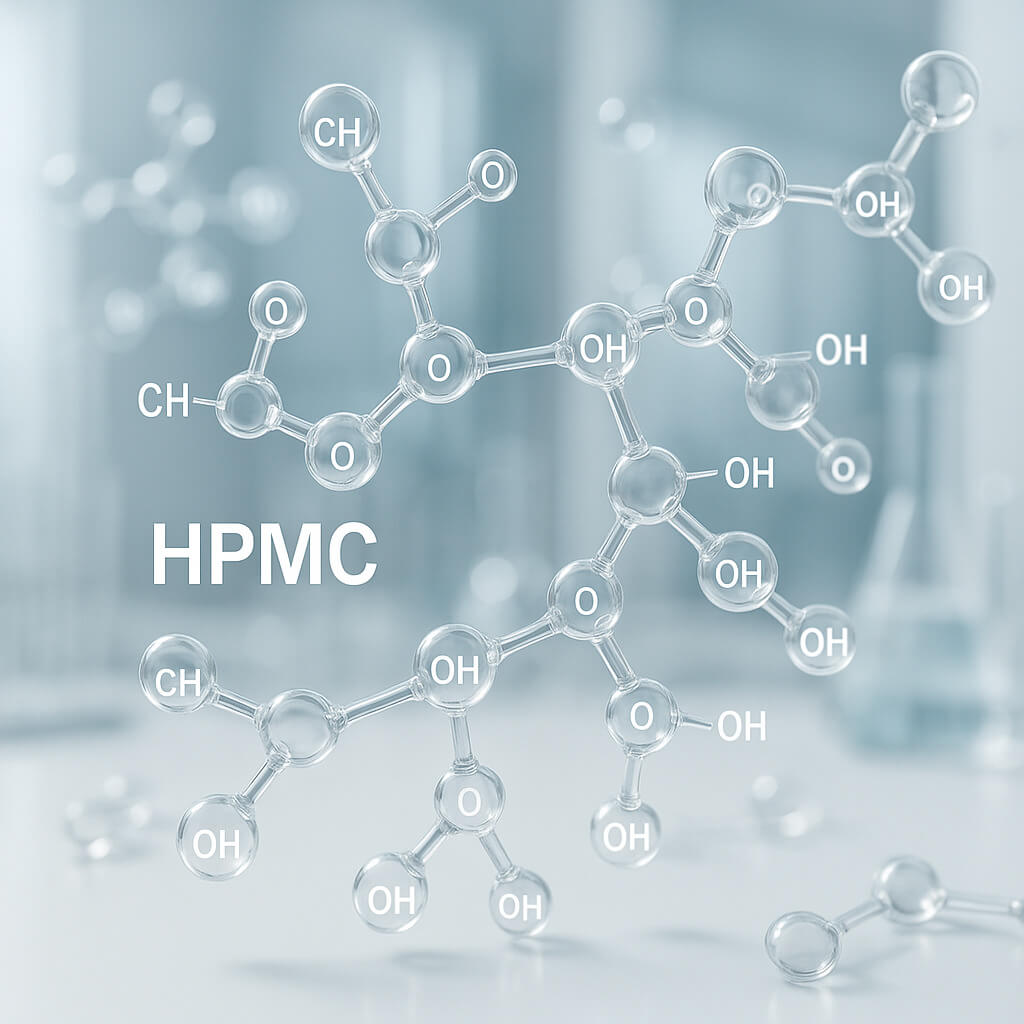Hydroxypropyl Methylcellulose (HPMC) K4M is a water-soluble polymer that has widespread applications across several industries, particularly in pharmaceuticals. This low-viscosity grade of HPMC is known for its ability to control drug release, improve bioavailability, and enhance the stability of formulations. The versatility of HPMC K4M makes it a go-to excipient in pharmaceutical manufacturing, and its impact reaches beyond just tablets and capsules. In this article, we will explore the various uses of HPMC K4M in the industry, its properties, and why it is such a valuable ingredient in drug delivery systems and other formulations.

1. What is HPMC K4M and Why is It Used?
HPMC K4M is a cellulose derivative, specifically a low-viscosity hydroxypropyl methylcellulose, that dissolves in water and forms a gel-like consistency when hydrated. It’s widely used in the pharmaceutical industry for its ability to modify the release profile of drugs and improve formulation stability. The real story here is that HPMC K4M’s low viscosity and gel-forming properties make it an essential ingredient for both immediate-release and controlled-release drug formulations.
HPMC K4M is also used as a binder in tablet formulations, ensuring that the active pharmaceutical ingredients (APIs) are uniformly distributed and remain stable during manufacturing and storage. In addition, it acts as a thickening and suspending agent, making it useful for liquid formulations such as syrups, suspensions, and injectables. The biocompatibility, low toxicity, and biodegradability of HPMC K4M also contribute to its widespread use in both oral and injectable pharmaceutical products.
The flexibility of HPMC K4M allows it to be used in a variety of pharmaceutical products, providing consistency and reliability across multiple applications.
| Applicazione | Role of HPMC K4M | Beneficio |
|---|---|---|
| Tablet formulations | Legante, agente a rilascio controllato | Ensures uniformity, stability, and controlled release |
| Liquid formulations (syrups, suspensions) | Suspender, thickening agent | Prevents settling, ensures uniformity |
| Injectable formulations | Controlled-release agent | Provides sustained drug release |
2. What Are the Common Applications of HPMC K4M in Pharmaceuticals?
HPMC K4M is widely used across pharmaceutical formulations. But here’s the kicker… it’s not just for tablets! One of its most significant applications is in controlled-release drug systems, where it ensures that drugs are released slowly over time. This is crucial for medications that require consistent dosing over extended periods, such as painkillers or blood pressure medications.
In addition to controlled-release tablets, HPMC K4M is used as a binder in tablet formulations. Its role here is to help bind the ingredients together, ensuring that the tablet holds its shape and disintegrates properly when ingested. It also helps improve the uniformity of the tablet, preventing inconsistencies in the amount of drug delivered to the patient.
HPMC K4M is also used in liquid pharmaceutical formulations, such as syrups, suspensions, and injectables. As a suspending agent, it ensures that the active ingredient remains evenly distributed throughout the solution, preventing settling and clumping. Its gel-forming properties also improve the texture and mouthfeel of liquid medications, which can make them more palatable and easier for patients to consume.
| Applicazione | Role of HPMC K4M | Beneficio |
|---|---|---|
| Compresse a rilascio controllato | Gel-forming, controlled release | Extended therapeutic effect, improved patient adherence |
| Tablet formulations | Binder, stabilizer | Improved tablet integrity, uniformity |
| Liquid formulations | Suspender, thickening agent | Prevents settling, ensures uniform drug distribution |
3. How Does HPMC K4M Benefit Drug Delivery Systems?
HPMC K4M plays a critical role in drug delivery systems by controlling the rate at which drugs are released into the body. Ready for the good part? Its gel-forming ability ensures that the active ingredients in pharmaceutical products are released at the desired rate, whether it’s fast for immediate relief or slow for sustained effects. This capability is especially important for drugs that need to be delivered over an extended period, such as chronic disease treatments, where consistent blood levels are necessary for efficacy.
When included in controlled-release formulations, HPMC K4M swells in the presence of water, forming a gel matrix that slows the dissolution of the active ingredients. This ensures that the drug is released gradually, preventing spikes in drug concentration and maintaining steady therapeutic levels. This is particularly valuable for drugs with a narrow therapeutic index, where fluctuations in drug levels can be dangerous.
In addition to controlling release rates, HPMC K4M enhances the bioavailability of poorly soluble drugs by improving their solubility in the gastrointestinal tract. It allows for quicker dissolution and absorption of active ingredients, which leads to more efficient and effective drug delivery. This makes it an essential excipient for formulators of drugs with low water solubility.
| Beneficio | Descrizione | Applicazione |
|---|---|---|
| Controlled drug release | Gel-forming matrix controls drug release rate | Prolonged therapeutic effect, reduced dosing frequency |
| Improved bioavailability | Enhances solubility and dissolution | Increases drug absorption for poorly soluble drugs |
| Stability and consistency | Ensures uniform release and stability | Consistent therapeutic levels, improved patient outcomes |
4. How Does HPMC K4M Contribute to Tablet Formulation and Stability?
HPMC K4M plays a vital role in tablet formulation, ensuring the tablets remain stable, uniform, and effective over time. But here’s the kicker… HPMC K4M is not just a binder; it also helps improve the tablet’s disintegration and dissolution properties. Its ability to form a gel when in contact with water means that it can control the rate at which the tablet breaks down in the body, ensuring that the drug is released at the optimal rate for therapeutic efficacy.
As a binder, HPMC K4M helps hold the tablet together, providing the necessary mechanical strength to withstand manufacturing and transportation without breaking. Its gel-forming properties also ensure that the tablet disintegrates properly when ingested, allowing for rapid or controlled drug release, depending on the formulation. HPMC K4M is essential for ensuring that the tablet remains intact until it reaches the body and delivers the drug as intended.
The stability of tablets formulated with HPMC K4M is also improved during storage. This excipient helps protect the active ingredients from degradation by maintaining the integrity of the tablet and preventing moisture from affecting the drug’s potency.
| Applicazione | Role of HPMC K4M | Beneficio |
|---|---|---|
| Tablet formulation | Binder, disintegrant | Improved stability, uniform drug release |
| Tablet disintegration | Forms gel to control drug release | Ensures controlled and consistent release |
| Storage stability | Maintains tablet integrity | Reduces degradation, improves shelf life |
5. How Does HPMC K4M Improve Drug Solubility and Absorption?
Many drugs have poor solubility in water, which makes them harder to absorb in the body. HPMC K4M addresses this issue by improving the solubility of poorly soluble drugs, making them easier for the body to absorb. This is where it gets interesting… HPMC K4M’s ability to form a gel matrix in the gastrointestinal tract allows poorly soluble drugs to dissolve more efficiently, leading to faster absorption and improved bioavailability.
In addition to enhancing solubility, HPMC K4M stabilizes the drug in the gastrointestinal tract, preventing premature breakdown or inactivation. This ensures that more of the active ingredient reaches the bloodstream, where it can exert its therapeutic effect.
HPMC K4M also helps maintain consistent drug release in the gastrointestinal tract, preventing sudden spikes in drug concentration that can lead to side effects or reduced efficacy. This is especially important for drugs that require a specific plasma concentration to be effective, such as pain management medications.
| Applicazione | Role of HPMC K4M | Beneficio |
|---|---|---|
| Poorly soluble drugs | Enhances solubility, aids in dissolution | Improved bioavailability, faster absorption |
| Controlled-release systems | Slows drug dissolution | Consistent plasma levels, improved efficacy |
6. What Are the Uses of HPMC K4M in Food and Cosmetics?
HPMC K4M isn’t just limited to pharmaceuticals. It has valuable applications in food and cosmetics as well. Ready for the good part? In the food industry, HPMC K4M acts as a thickening and stabilizing agent, improving the texture and consistency of various products. It is commonly used in food items like sauces, dressings, and beverages to provide a smooth, stable texture and prevent separation.
In cosmetics, HPMC K4M is used as an emulsifier and stabilizer. It helps create smooth, uniform formulations, ensuring that the active ingredients in lotions, creams, and gels remain evenly distributed. HPMC K4M is also used to enhance the spreadability and texture of cosmetic products, making them more pleasant to apply.
The versatility of HPMC K4M makes it an essential ingredient in a wide range of applications beyond pharmaceuticals, offering stability and consistency across various industries.
| Applicazione | Role of HPMC K4M | Beneficio |
|---|---|---|
| Food formulations | Addensante, stabilizzante | Enhances texture, prevents separation |
| Cosmetici | Emulsifier, stabilizer | Improves texture, ensures uniformity |
| Beverages | Suspender | Prevents settling, enhances mouthfeel |
7. How Does HPMC K4M Contribute to Sustainability in Pharmaceutical and Food Products?
HPMC K4M is an eco-friendly and biodegradable excipient, making it an ideal choice for industries looking to reduce their environmental impact. What’s the real story? As a natural cellulose derivative, HPMC K4M is derived from renewable plant sources, making it more sustainable than many synthetic alternatives. This is particularly important in industries like pharmaceuticals, where there is a growing demand for greener, more sustainable ingredients.
In addition to its sustainability, HPMC K4M’s biodegradability ensures that it won’t persist in the environment, reducing long-term waste and promoting a circular economy. As the demand for eco-friendly and sustainable products continues to rise, HPMC K4M is well-positioned to meet these needs in both the pharmaceutical and food industries.
| Beneficio | Descrizione | Applicazione |
|---|---|---|
| Biodegradabile | Breaks down naturally, reducing environmental impact | Pharmaceuticals, food, and cosmetics |
| Renewable source | Derived from plants, reducing reliance on synthetic materials | Green formulations, sustainable products |
| Ecologico | Compliant with sustainability initiatives | Reduces waste, promotes circular economy |
8. What Are the Challenges of Using HPMC K4M?
While HPMC K4M offers numerous benefits, there are some challenges associated with its use. One common issue is achieving precise viscosity control, as slight variations in viscosity can impact the drug release profile and the final product’s stability. Ready for the good part? Manufacturers must ensure that the viscosity of HPMC K4M is consistent across batches, as any discrepancies can affect the performance of the formulation.
Another challenge is the solubility of certain drugs in formulations containing HPMC K4M. While HPMC K4M improves the solubility of many poorly soluble drugs, some may still require additional solubilizing agents to achieve the desired bioavailability.
| Sfida | Soluzione | Applicazione |
|---|---|---|
| Controllo della viscosità | Strict quality control, consistent formulation | Ensures consistent drug release |
| Drug solubility issues | Use additional excipients for solubilization | Improve bioavailability of poorly soluble drugs |
| Formulation consistency | Rigorous testing and monitoring | Maintain product quality and stability |
9. How Does HPMC K4M Compare to Other Grades of HPMC in Drug Delivery?
HPMC K4M is just one grade of Hydroxypropyl Methylcellulose, and its performance can vary significantly from other grades like HPMC K100M or HPMC K15M. What’s the real story? The primary difference lies in the viscosity of the various grades. HPMC K100M, for example, has a much higher viscosity and is better suited for sustained-release formulations where a slower dissolution rate is necessary. In contrast, HPMC K4M’s low viscosity makes it ideal for rapid drug release applications, where quick dissolution is desired.
The choice of HPMC grade depends on the specific formulation needs, such as the desired release rate, tablet hardness, and dissolution speed. HPMC K4M is often chosen for fast-release formulations, while higher viscosity grades like HPMC K100M are used for slow-release and controlled-release systems.
| Grado HPMC | Livello di viscosità | Ideal Use |
|---|---|---|
| Motore HPMC K4M | Basso | Fast-release tablets, suspensions |
| HPMC K15M | Medio | Intermediate-release formulations |
| HPMC K100M |
| High | Sustained-release tablets, long-acting drugs |
10. What Does the Future Hold for HPMC K4M in Drug Delivery?
The future of HPMC K4M looks promising, with ongoing advancements in drug delivery technologies. Ready for the good part? The development of more precise and controlled drug release systems will likely increase the demand for HPMC K4M, especially in personalized medicine and targeted drug delivery systems. Furthermore, as the pharmaceutical industry focuses on sustainability, HPMC K4M’s biodegradability and renewable sourcing will make it an even more attractive choice for formulators.
HPMC K4M is expected to play a vital role in improving patient adherence to treatment regimens, particularly with the growth of controlled-release and once-daily formulations. The expanding need for eco-friendly and effective pharmaceutical products will ensure that HPMC K4M continues to be a valuable component in the industry.
| Tendenza futura | Impatto potenziale | Applicazione |
|---|---|---|
| Medicina personalizzata | Tailored formulations for individual patients | Customized drug release profiles |
| Sostenibilità | Biodegradable, eco-friendly products | Green pharmaceuticals, sustainable formulations |
| Targeted drug delivery | Precise and controlled drug release systems | Enhanced therapeutic outcomes, improved patient compliance |
Sezione FAQ
Domanda 1: What is HPMC K4M and why is it used in pharmaceuticals?
HPMC K4M is a low-viscosity grade of Hydroxypropyl Methylcellulose used in pharmaceuticals for its ability to control drug release, improve bioavailability, and act as a binder in tablet formulations.
D2: How does HPMC K4M work in drug delivery systems?
HPMC K4M forms a gel matrix when it comes into contact with water, which controls the release of drugs, making it ideal for both immediate-release and controlled-release formulations.
D3: What are the benefits of using HPMC K4M in pharmaceutical formulations?
HPMC K4M offers better drug release control, enhances the bioavailability of poorly soluble drugs, and improves tablet stability, making it a crucial excipient in pharmaceutical manufacturing.
D4: How does HPMC K4M improve drug solubility and absorption?
HPMC K4M helps dissolve poorly soluble drugs more efficiently, enhancing their absorption and bioavailability, which leads to better therapeutic outcomes.
D5: What are the uses of HPMC K4M in food and cosmetics?
HPMC K4M is used as a thickener and stabilizer in food, and as an emulsifier and stabilizer in cosmetics, improving texture, uniformity, and shelf life.




